VOL- 6 ; ISSUE- 1, PUNE RESEARCH - An International Journal in English (ISSN 2454-3454) JIF 3.02
6.1 ENGLISH
Area of Article : ALL
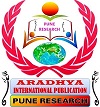
VOL- 6 ; ISSUE- 1, PUNE RESEARCH - An International Journal in English (ISSN 2454-3454) JIF 3.02
6.1 ENGLISH

VOL- 6 ; ISSUE- 1, PUNE RESEARCH - An International Journal in English (ISSN 2454-3454) JIF 3.02
6.1.1 ENGLISH
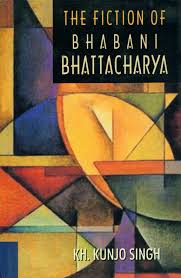
Bhattacharya’s women are not just individuals
but symbols. The innocent beings in the beginning mature into experienced
beings along with the progression of the theme. They finally emerge as people
possessing a will of their own facing the future with confidence and renewed
vigour. Kajoli, Monju, Chandralekha, Mohini, Suruchi, Sumita, Devjani, Stella
and Jennifer do not fall prey to despair for long. Though bruised and battered
in the patriarchal set-up, in the end they emerge victorious. What makes the
characters unforgettable is the fact that they are concretely, fully, and
realistically portrayed and they are a part of the fictional settings in which
they live and breathe. They share many qualities in common – compassion,
ability to love, ability to mature both through love and suffering, courage,
independence of will along with gracefulness, charm and a sense of playfulness.
They have great desire to be fulfilled not only as women but also as human
beings living in a community. In spite of all the difficulties they face in
their headlong confrontation with reality, their vigour and vitality remain
undimmed. This paper focuses on how Bhattacharya presented the strength of
Indian women who showed their power without breaking from the familial circle.
Key Words: suppression, male domination, individuality, power and space, self reliant.
VOL- 6 ; ISSUE- 1, PUNE RESEARCH - An International Journal in English (ISSN 2454-3454) JIF 3.02
6.1.2 ENGLISH
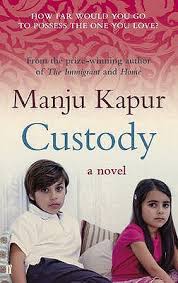
Indian women novelists have been portraying
women in various manifestations. But recently, the remarkable range of India’s
most accomplished women writers of post-colonial strand has brought a
tremendous change in the trend of depicting women characters. Women writers as
Kamala Markendaya, Nayantara Sahgal, Anita Desai, Shashi Deshpande, Bharathi
Mukherjee, Manju Kapur, Gita Hariharan and the others have intuitively
perceived the gender issues upsetting women and presented women as an
individual who fight against suppression and oppression of the patriarchy. Women
have to be obedient, quiet, submissive, and passive not claiming any of their
rights neither as women nor as human beings. The present paper analyses the
patriarchal norms confronted by the women characters in Manju Kapur’s novels.
Kapur has presented the women of the1940s, when women had no voice to assert
their rights, most importantly the voice of the protagonist. She raises the
voice against male chauvinism to claim the rights of economic independence.
Kapur makes the woman a cult figure that fights against taboos, social and
joint family restrictions and constraints laid by patriarchy in the tradition.
Key Words:
Women Identity, Patriarchal Society, Tradition and Modernity, Changing Image of
Women
VOL- 6 ; ISSUE- 1, PUNE RESEARCH - An International Journal in English (ISSN 2454-3454) JIF 3.02
6.1.3 ENGLISH

A foreign language teacher necessarily has to
invent innovative, practicable and the most feasible techniques to achieve a
desired goal. The techniques can be adopted or invented at the individual level
of the teacher who deals with the target group of students. In the present
time, developing oral communication is a vital component in the teaching of
English as a foreign language. The general goal of the teacher is to motivate
the learners to speak in the language they are learning. The inclusion of
innovative methodologies like direct method, virtual classroom conditions,
tools and models and the individual potential related theories may best suit
the common conditions for the second language learners. The paper focuses on
the utility and necessity of the inclusion of ice-breakers and warmers in the
language curriculum prepared for the second language learners. The activities
like - draw a picture, guess the feelings, language games, group and pair works
etc. are to be practiced by taking much caution of the physical, mental and
social conditions of the ESL learners.
Key words : Innovative, target group, interactive,
fun-oriented, psychological, participatory approach, curriculum, ESL,
experimentation etc.
VOL- 6 ; ISSUE- 1, PUNE RESEARCH - An International Journal in English (ISSN 2454-3454) JIF 3.02
6.1.4 LITERATURE
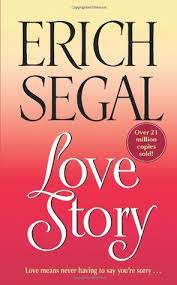
The novel “Love Story” has been selected to
study the reason of its popularity. It is interesting to point out the elements
present in the novel that make it so popular. “Love Story” became the
top-selling work of fiction for all of 1970 in the United States, and was
translated into more than 20 languages. The novel stayed for 41 weeks in The
New York Times Best Seller list, reaching the top spot. “Love Story” is a
Romance novel written by American writer Erich Segal. The article aims to focus
on the use of elements that makes the novel so entertaining and popular.
Key Words – Popularity, Entertainment,
Romance.
VOL- 6 ; ISSUE- 1, PUNE RESEARCH - An International Journal in English (ISSN 2454-3454) JIF 3.02
6.1.5 ENGLISH
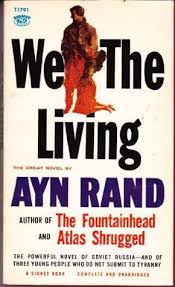
Ayn Rand was a woman who established herself
as a secular cult, a judge of Objectivism and philosophy. Her place in American
literature and philosophy is yet to be determined. She awaits her destiny and
no one can predict it with certainty. However, she is remembered as whatever,
value future generations place on her work; the Russian immigrant girl who rose
to national and international fame as a defender of what she considered
American values. Rand lived her life as only her unique sensibilities dictated.
Ayn Rand is also considered as a novelist who was not satisfied to let her
fiction to speak for itself and who spent a quarter century explaining it. She
is the systematic philosopher, who flaunted her lack of formal credentials,
purposely avoided the mainstream to challenge rather than make the team. We the
Living is Ayn Rand’s first novel published in 1936. It is an autobiographical
novel. Ayn Rand points out to the vagaries of Socialism in this novel. The
novel also defines quite simply, a well-crafted, good-read romantic existence
in the post-revolutionary Petrograd.
Key words : Philosophy, Objectivism, Rational cognition
VOL- 6 ; ISSUE- 1, PUNE RESEARCH - An International Journal in English (ISSN 2454-3454) JIF 3.02
6.1.6 ENGLISH
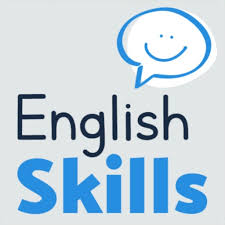
The present article is an attempt to critically
examine as to how literature has, all along the times been, and is a powerful
tool for imparting language skills, and an inevitable medium of teaching English
language. It goes without saying that the language of any literary piece is a well
organized and wonderful choice of diction. It can therefore be quite useful in
developing linguistic knowledge as it eventually and legitimately seeks to
develop the reading, writing, speaking, listening, and, of course, critical
thinking skills; and promotes literary understanding and general linguistic
awareness among teachers and learners. The paper thus seeks to explore as to
why a language teacher should use literary texts in the language classroom; and
what sort of literature should be used by the teachers with the language
learners. The impact of literature vis-a-vis the acquisition of language skills
is fairly dealt with; and an attempt has been made to critically evaluate as to
how far literature has been, and is a powerful tool rather than an end in
teaching English as a second or foreign language.
Key Words: Communication,
grammatical structure, literary devices, syntax, jargon, socio-linguist.
VOL- 6 ; ISSUE- 1, PUNE RESEARCH - An International Journal in English (ISSN 2454-3454) JIF 3.02
6.1.7 ENGLISH
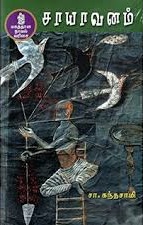
This proposed paper bids a detailed analysis
of Sa. Kandhasamy’s Novel Sayavanam. This novel provide the elemental instances
of nature, Social constructivism and natural values of nature, ethical contextualism
and ethical pluralism and the issue of environment has been associated with
that a forest called sayavanam. This novel shows how the forest has been
destroyed by a man for his own profit. And what are all the problems faced by
the villagers because of this deforestation? This research paper focuses how
the central character destroys the forest and builds the sugarcane factory.
Key Words: Eco-Criticism,
Industrialization, Environment.
VOL- 6 ; ISSUE- 1, PUNE RESEARCH - An International Journal in English (ISSN 2454-3454) JIF 3.02
6.1.8 ENGLISH
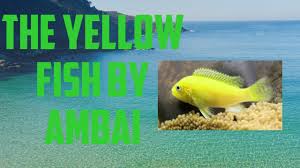
Tamil Stories are a piece of regular day to
day existence and comprise implies for entertainers to communicate and arrange
understanding. For analysts, they give a site to look at the implications
individuals, independently or all things considered, credit to lived
understanding. Accounts are not straightforward interpretations of 'truth'
however mirror a unique interchange between life, experience and story. Set in
their more extensive socio-political and social settings, stories can give bits
of knowledge into how constrained vagrants look to comprehend uprooting and
brutality, restore character in burst life courses and networks, or take the
stand concerning viciousness and suppression. The analyst must give specific consideration
to clarify about ladies issues through socio social point of view in ambai
short story yellow fish. 'Yellow Fish' is a socio social short story by Ambai
(C.S. Lakshmi) composed on the topic of lady's hankering for freedom from the
male matchless quality and depicted existence of fishers.
Key words: Socioclutural, Tradition, Identity.